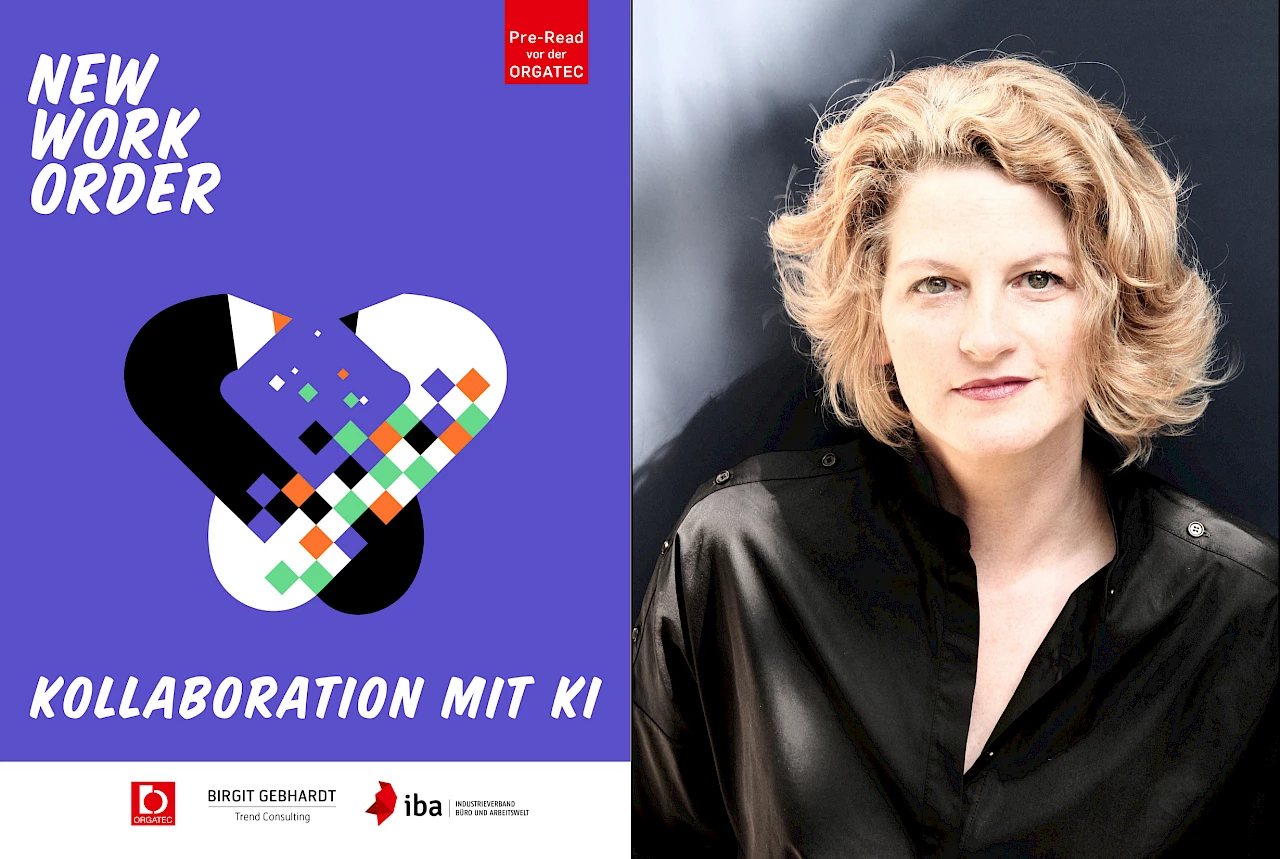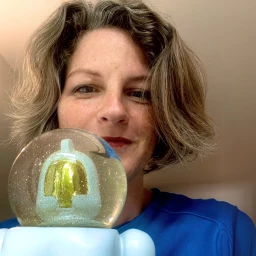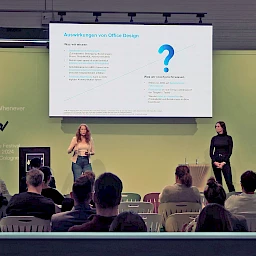Artificial intelligence has arrived in everyday working life—whether as a function in office tools, as an assistant for research and visualization or as an AI agent in company processes. The question is no longer whether AI increases productivity, but how it changes collaboration. This is exactly where the new “New Work Order” study Collaboration with AI by trend researcher Birgit Gebhardt comes in. This pre-read outlines a near future in which AI will be a natural collaborator, and sheds light on the tasks and routines we need to rethink for this new cooperation and the spaces we will need for them.
Why now?
The use of AI is spreading rapidly. Large language models (LLMs) are being integrated into ERP, DMS and collaboration environments, interfaces are linking previously isolated islands of knowledge and workflows are being given a “thinking” level. This is how the roles are being redistributed: AI collects, structures and links data in real time, while teams define goals, parameters and quality benchmarks and validate results in context. But how must this collaboration be orchestrated so that it benefits the entire organization?
Research and development and networked value creation
This pre-read is deliberately aimed at companies that use AI as a cross-sectional technology. It positions research & development as the central process and groups other AI-supported working methods around it in a manner that is clearly goal and value-oriented and similar to networked agent systems. The author has interviewed experts from business and science, and describes the development steps from the initial implementation of AI to the AI-driven company.
Bringing knowledge to where it is needed
AI makes knowledge connectable. Marketing data that previously lay dormant in Reporting now flows into Product Development. Service feedback becomes part of Planning, and Procurement accesses it at the same time. Front and back office work with a single database—a single source of truth. Collaboration is no longer limited to pure handover activities, but leads to the interdisciplinary development of solutions.
A new concept of collaboration
AI shortens translation and transfer steps. Teams include a “thinking” level that designs variants, simulates decisions and documents intermediate steps. Depending on the context of the work, AI sometimes serves as a tool and sometimes as a simulated working environment, as Birgit Gebhardt illustrates using examples from innovation work. Innovation gains speed, evaluation gains weight. AI agents check assumptions and generate prototypes and data visualizations. This also requires people to exercise more judgement: “What result is good for us, here and now?” Gebhardt emphasises that reflection and critical questioning only take place, however, if they are consciously given space—not least to prevent deskilling and feelings of inferiority. HR and management are therefore called upon to secure this space for a critical debate that goes into depth and does not lose sight of the focus: “Providing space and a framework for mental resources in which learning progress can be achieved at an individual and organizational level is a management task.”
Which spaces will we need in future?
When teams work differently with AI, they also need different resonance spaces: spaces that make tasks visible, provide orientation and inspire creativity. Spaces that interweave the physical, digital and social dimensions and enable intuitive collaboration. Birgit Gebhardt suggests three metaphors that summarize the new forms of collaboration: the control centre, the innovation lab and the gaming challenge.
The control centre stands for the transformation from the office as an administrative apparatus to an agile control unit. Standard processes are automated; it’s all about overview, prioritization and decisions in real time. Different departments are located close together; transparent areas and hybrid connections make information accessible to everyone. The principle is clarity, speed and orientation.
The innovation lab symbolizes the proximity of office and production. Thinking and doing come together here in what is simultaneously a workshop and a thinking space. Blue-collar and white-collar work coalesce and lead to shorter innovation cycles. AI supports the creation of variants and visualization, AR/VR makes designs accessible and physical AI links human and machine. The principle is creativity through immediate feasibility.
The gaming challenge points to new dynamics of collaboration. Teams use simulated environments, practise strategy and interaction, compete against each other and receive immediate feedback. Young generations are familiar with it—they create virtual worlds, practise rescue missions and urban planning while playing. Applied to the world of work, this means that workplaces become sandboxes, projects become team challenges and innovation funnels become hybrid playgrounds. The principle is energy, learning curves and collective flow.
What all three metaphors have in common is that they rethink collaboration, clarify tasks, make networking a spatial experience and integrate technology in such a way that humans and AI combine their strengths.
The complete study will be presented at ORGATEC 2026. The preprint is now available as a PDF and invites you to scrutinize routines, data flows and spaces in order to measurably increase the added value of AI for collaboration and to demonstrably improve cooperation.






